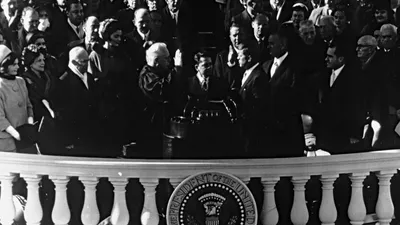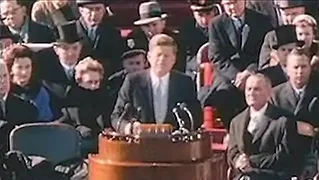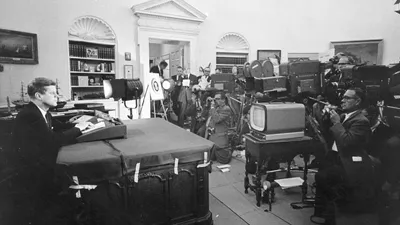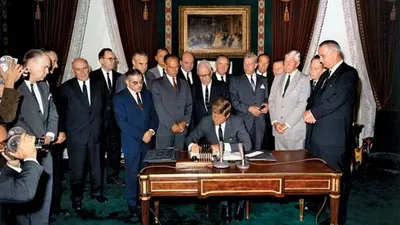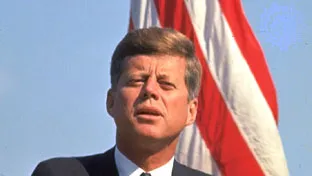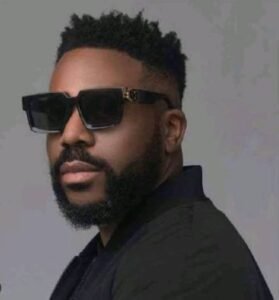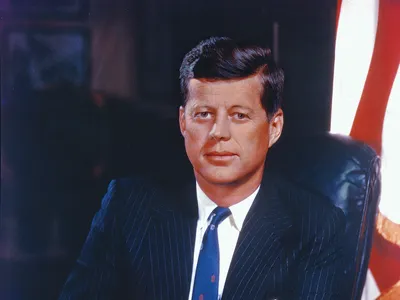
Politics, Law & Government
World Leaders
Presidents & Heads of States
John F. Kennedy
35th president of the United States
Also known as: JFK, John Fitzgerald Kennedy
Top Questions
What was John F. Kennedy’s family like?
What were John F. Kennedy’s parents’ names?
When was John F. Kennedy born and when did he die?
John F. Kennedy (born May 29, 1917, Brookline, Massachusetts, U.S.—died November 22, 1963, Dallas, Texas) was the 35th president of the United States (1961–63), who faced a number of foreign crises, especially in Cuba and Berlin, but managed to secure such achievements as the Nuclear Test-Ban Treaty and the Alliance for Progress. He was assassinated while riding in a motorcade in Dallas.
Quick Facts
In full: John Fitzgerald Kennedy
Byname: JFK
Born: May 29, 1917, Brookline, Massachusetts, U.S.
Died: November 22, 1963, Dallas, Texas (aged 46)
Title / Office: presidency of the United States of America (1961-1963), United States United States Senate (1953-1960), United States House of Representatives (1947-1953), United States
Political Affiliation: Democratic Party
Awards And Honors: Pulitzer Prize
Early life
Kennedy family
1 of 5
Kennedy familyKennedy family photo c. 1931: (from left) Rosemary; Joseph, Jr.; Kathleen; Patricia; Rose; Joseph, Sr.; Jean; Eunice; John; and Robert.
Brookline, Massachusetts, birthplace of John F. Kennedy
2 of 5
Brookline, Massachusetts, birthplace of John F. KennedyThe birthplace of U.S. Pres. John F. Kennedy, Brookline, Massachusetts.
John F. Kennedy: boyhood football
3 of 5
John F. Kennedy: boyhood footballJohn F. Kennedy (seated, front row, far right) photographed with the Dexter School football team.
John F. Kennedy
4 of 5
John F. KennedyA young John F. Kennedy dressed in a police officer costume.
John F. Kennedy: college graduation
5 of 5
John F. Kennedy: college graduationJohn F. Kennedy wearing college graduation attire.
The second of nine children, Kennedy was reared in a family that demanded intense physical and intellectual competition among the siblings—the family’s touch football games at their Hyannis Port retreat later became legendary—and was schooled in the religious teachings of the Roman Catholic church and the political precepts of the Democratic Party. His father, Joseph Patrick Kennedy, had acquired a multimillion-dollar fortune in banking, bootlegging, shipbuilding, and the film industry, and as a skilled player of the stock market. His mother, Rose, was the daughter of John F. (“Honey Fitz”) Fitzgerald, onetime mayor of Boston. They established trust funds for their children that guaranteed lifelong financial independence. After serving as the head of the Securities and Exchange Commission, Joseph Kennedy became the U.S. ambassador to Great Britain, and for six months in 1938 John served as his secretary, drawing on that experience to write his senior thesis at Harvard University (B.S., 1940) on Great Britain’s military unpreparedness. He then expanded that thesis into a best-selling book, Why England Slept (1940).
John F. Kennedy and PT-109
John F. Kennedy and PT-109John F. Kennedy commanding the U.S. Navy torpedo boat PT-109, 1943.
In the fall of 1941 Kennedy joined the U.S. Navy and two years later was sent to the South Pacific. By the time he was discharged in 1945, his older brother, Joe, who their father had expected would be the first Kennedy to run for office, had been killed in the war, and the family’s political standard passed to John, who had planned to pursue an academic or journalistic career.
John Kennedy himself had barely escaped death in battle. Commanding a patrol torpedo (PT) boat, he was gravely injured when a Japanese destroyer sank it in the Solomon Islands. Marooned far behind enemy lines, he led his men back to safety and was awarded the U.S. Navy and Marine Corps Medal for heroism. He also returned to active command at his own request. (These events were later depicted in a Hollywood film, PT 109 [1963], that contributed to the Kennedy mystique.) However, the further injury to his back, which had bothered him since his teens, never really healed. Despite operations in 1944, 1954, and 1955, he was in pain for much of the rest of his life. He also suffered from Addison disease, though this affliction was publicly concealed. “At least one-half of the days he spent on this earth,” wrote his brother Robert, “were days of intense physical pain.” (After he became president, Kennedy combated the pain with injections of amphetamines—then thought to be harmless and used by more than a few celebrities for their energizing effect. According to some reports, both Kennedy and the first lady became heavily dependent on these injections through weekly use.) None of this prevented Kennedy from undertaking a strenuous life in politics. His family expected him to run for public office and to win.
U.S. trooops of the 7th. and 9th. divisions wade through marshland during a joint operation on South Vietnam’s Mekong Delta, April 1967.
Britannica Quiz
Pop Quiz: 19 Things to Know About the Vietnam War
Congressman and senator
Kennedy did not disappoint his family; in fact, he never lost an election. His first opportunity came in 1946, when he ran for Congress. Although still physically weak from his war injuries, he campaigned aggressively, bypassing the Democratic organization in the Massachusetts 11th congressional district and depending instead upon his family, college friends, and fellow navy officers. In the Democratic primary he received nearly double the vote of his nearest opponent; in the November election he overwhelmed the Republican candidate. He was only 29.
Kennedy served three terms in the House of Representatives (1947–53) as a bread-and-butter liberal. He advocated better working conditions, more public housing, higher wages, lower prices, cheaper rents, and more Social Security for the aged. In foreign policy he was an early supporter of Cold War policies. He backed the Truman Doctrine and the Marshall Plan but was sharply critical of the Truman administration’s record in Asia. He accused the State Department of trying to force Chiang Kai-shek into a coalition with Mao Zedong. “What our young men had saved,” he told the House on January 25, 1949, “our diplomats and our President have frittered away.”
Jacqueline Kennedy
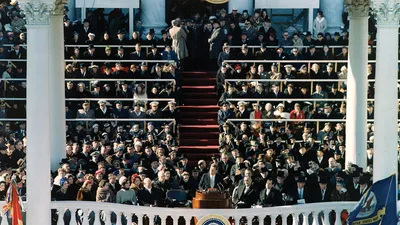
1 of 2
Jacqueline KennedyJacqueline Kennedy, 1961.
John F. Kennedy and Jacqueline Kennedy
2 of 2
John F. Kennedy and Jacqueline KennedyU.S. Pres. John F. Kennedy and his wife, Jacqueline Kennedy, in the Blue Room of the White House at Christmastime, 1961.
His congressional district in Boston was a safe seat, but Kennedy was too ambitious to remain long in the House of Representatives. In 1952 he ran for the U.S. Senate against the popular incumbent, Henry Cabot Lodge, Jr. His mother and sisters Eunice, Patricia, and Jean held “Kennedy teas” across the state. Thousands of volunteers flocked to help, including his 27-year-old brother Robert, who managed the campaign. That fall the Republican presidential candidate, General Dwight D. Eisenhower, carried Massachusetts by 208,000 votes; but Kennedy defeated Lodge by 70,000 votes. Less than a year later, on September 12, 1953, Kennedy enhanced his electoral appeal by marrying Jacqueline Lee Bouvier (Jacqueline Kennedy Onassis). Twelve years younger than Kennedy and from a socially prominent family, the beautiful “Jackie” was the perfect complement to the handsome politician; they made a glamorous couple.
As a senator, Kennedy quickly won a reputation for responsiveness to requests from constituents, except on certain occasions when the national interest was at stake. In 1954 he was the only New England senator to approve an extension of President Eisenhower’s reciprocal-trade powers, and he vigorously backed the opening of the St. Lawrence Seaway, despite the fact that over a period of 20 years no Massachusetts senator or congressman had ever voted for it.
John F. Kennedy
John F. KennedyJohn F. Kennedy seated at a typewriter.
To the disappointment of liberal Democrats, Kennedy soft-pedaled the demagogic excesses of Sen. Joseph R. McCarthy of Wisconsin, who in the early 1950s conducted witch-hunting campaigns against government workers accused of being communists. Kennedy’s father liked McCarthy, contributed to his campaign, and even entertained him in the family’s compound at Hyannis Port on Cape Cod in Massachusetts. Kennedy himself disapproved of McCarthy, but, as he once observed, “Half my people in Massachusetts look on McCarthy as a hero.” Yet, on the Senate vote over condemnation of McCarthy’s conduct (1954), Kennedy expected to vote against him. He prepared a speech explaining why, but he was absent on the day of the vote. Later, at a National Press Club Gridiron dinner, costumed reporters sang, “Where were you, John, where were you, John, when the Senate censured Joe?” Actually, John had been in a hospital, in critical condition after back surgery. For six months afterward he lay strapped to a board in his father’s house in Palm Beach, Florida. It was during this period that he worked on Profiles in Courage (1956), an account of eight great American political leaders who had defied popular opinion in matters of conscience, which was awarded a Pulitzer Prize in 1957. Although Kennedy was credited as the book’s author, it was later revealed that his assistant Theodore Sorensen had done much of the research and writing.
Back in the Senate, Kennedy led a fight against a proposal to abolish the electoral college, crusaded for labour reform, and became increasingly committed to civil rights legislation. As a member of the Senate Committee on Foreign Relations in the late 1950s, he advocated extensive foreign aid to the emerging nations in Africa and Asia, and he surprised his colleagues by calling upon France to grant Algerian independence.
During these years his political outlook was moving leftward. Possibly because of their father’s dynamic personality, the sons of Joseph Kennedy matured slowly. Gradually John’s stature among Democrats grew, until he had inherited the legions that had once followed Gov. Adlai E. Stevenson of Illinois, the two-time presidential candidate who by appealing to idealism had transformed the Democratic Party and made Kennedy’s rise possible.
At a glance: the Kennedy presidency
Presidential candidate and president
Learn about the failed Bay of Pigs invasion and the Cuban missile crisis that occurred during U.S. President John F. Kennedy’s tenure1 of 2
Learn about the failed Bay of Pigs invasion and the Cuban missile crisis that occurred during U.S. President John F. Kennedy’s tenureAn overview of John F. Kennedy.
See all videos for this article
John F. Kennedy
2 of 2

John F. KennedyJohn F. Kennedy, 1961.
Kennedy had nearly become Stevenson’s vice presidential running mate in 1956. The charismatic young New Englander’s near victory and his televised speech of concession (Estes Kefauver won the vice presidential nomination) brought him into some 40 million American homes. Overnight he had become one of the best-known political figures in the country. Already his campaign for the 1960 nomination had begun. One newspaperman called him a “young man in a hurry.” Kennedy felt that he had to redouble his efforts because of the widespread conviction that no Roman Catholic candidate could be elected president. He made his 1958 race for reelection to the Senate a test of his popularity in Massachusetts. His margin of victory was 874,608 votes—the largest ever in Massachusetts politics and the greatest of any senatorial candidate that year.
John F. Kennedy
1 of 2
John F. KennedyU.S. Pres. John F. Kennedy.
Robert Kennedy, Ted Kennedy, and John F. Kennedy
2 of 2
Robert Kennedy, Ted Kennedy, and John F. Kennedy(From left) Robert F. Kennedy, Ted Kennedy, and John F. Kennedy posing together at the White House in 1963.
A steady stream of speeches and periodical profiles followed, with photographs of him and his wife appearing on many a magazine cover. Kennedy’s carefully calculated pursuit of the presidency years before the first primary established a practice that became the norm for candidates seeking the nation’s highest office. To transport him and his staff around the country, his father bought a 40-passenger Convair aircraft. His brothers Robert (“Bobby,” or “Bob”) and Edward (“Teddy,” or “Ted”) pitched in. After having graduated from Harvard University (1948) and from the University of Virginia Law School (1951), Bobby had embarked on a career as a Justice Department attorney and counselor for congressional committees. Ted likewise had graduated from Harvard (1956) and from Virginia Law School (1959). Both men were astute campaigners.
Watch Democrats campaigning in the 1960 U.S. presidential primarie
1 of 2
Watch Democrats campaigning in the 1960 U.S. presidential primariesScenes from the 1960 Democratic Party primary election campaigns, with U.S. Sen. John F. Kennedy striving to prove himself to the public and to party leaders in the race to become the Democratic nominee in the U.S. presidential election.
See all videos for this article
See how Kennedy emerged from a crowded field to become the Democratic Party’s 1960 presidential nominee2 of 2
See how Kennedy emerged from a crowded field to become the Democratic Party’s 1960 presidential nomineeScenes from the 1960 Democratic National Convention, which nominated as candidate for president U.S. Sen. John F. Kennedy, who, in his acceptance speech, spoke of his hopes for a “New Frontier.”
See all videos for this article
In January 1960 John F. Kennedy formally announced his presidential candidacy. His chief rivals were the senators Hubert H. Humphrey of Minnesota and Lyndon B. Johnson of Texas. Kennedy knocked Humphrey out of the campaign and dealt the religious taboo against Roman Catholics a blow by winning the primary in Protestant West Virginia. He tackled the Catholic issue again, by avowing his belief in the separation of church and state in a televised speech before a group of Protestant ministers in Houston, Texas. Nominated on the first ballot, he balanced the Democratic ticket by choosing Johnson as his running mate. In his acceptance speech Kennedy declared, “We stand today on the edge of a New Frontier.” Thereafter the phrase “New Frontier” was associated with his presidential programs.
John F. Kennedy campaign button
John F. Kennedy campaign buttonButton from John F. Kennedy’s 1960 U.S. presidential campaign.
Another phrase—“the Kennedy style”—encapsulated the candidate’s emerging identity. It was glamorous and elitist, an amalgam of his father’s wealth, John Kennedy’s charisma and easy wit, Jacqueline Kennedy’s beauty and fashion sense (the suits and pillbox hats she wore became widely popular), the charm of their children and relatives, and the erudition of the Harvard advisers who surrounded him (called the “best and brightest” by author David Halberstam).
Kennedy won the general election, narrowly defeating the Republican candidate, Vice Pres. Richard M. Nixon, by a margin of less than 120,000 out of some 70,000,000 votes cast. Many observers, then and since, believed vote fraud contributed to Kennedy’s victory, especially in the critical state of Illinois, where Joe Kennedy enlisted the help of the ever-powerful Richard J. Daley, mayor of Chicago. Nixon had defended the Eisenhower record; Kennedy, whose slogan had been “Let’s get this country moving again,” had deplored unemployment, the sluggish economy, the so-called missile gap (a presumed Soviet superiority over the United States in the number of nuclear-armed missiles), and the new communist government in Havana. A major factor in the campaign was a unique series of four televised debates between the two men; an estimated 85–120 million Americans watched one or more of the debates. Both men showed a firm grasp of the issues, but Kennedy’s poise in front of the camera, his tony Harvard accent, and his good looks (in contrast to Nixon’s “five o’clock shadow”) convinced many viewers that he had won the debate. As president, Kennedy continued to exploit the new medium, sparkling in precedent-setting televised weekly press conferences.
U.S. trooops of the 7th. and 9th. divisions wade through marshland during a joint operation on South Vietnam’s Mekong Delta, April 1967.
Britannica Quiz
Pop Quiz: 19 Things to Know About the Vietnam War
John F. Kennedy: inaugural address
1 of 3
John F. Kennedy: inaugural addressU.S. Pres. John F. Kennedy delivering his inaugural address, Washington, D.C., January 20, 1961.
John F. Kennedy: presidential oath
2 of 3
John F. Kennedy: presidential oathJohn F. Kennedy being sworn in as U.S. president, January 20, 1961.
Watch President John F. Kennedy delivering his inaugural address in Washington, D.C., January 20, 19613 of 3
Watch President John F. Kennedy delivering his inaugural address in Washington, D.C., January 20, 1961U.S. Pres. John F. Kennedy delivering his inaugural address, Washington, D.C., January 20, 1961.
See all videos for this article
John F. Kennedy: inaugural addressU.S. Pres. John F. Kennedy delivering his inaugural address, January 20, 1961.
He was the youngest man and the first Roman Catholic ever elected to the presidency of the United States. His administration lasted 1,037 days. From the onset he was concerned with foreign affairs. In his memorable inaugural address, he called upon Americans “to bear the burden of a long twilight struggle…against the common enemies of man: tyranny, poverty, disease, and war itself.” He declared:
In the long history of the world, only a few generations have been granted the role of defending freedom in its hour of maximum danger. I do not shrink from this responsibility—I welcome it.…The energy, the faith, the devotion which we bring to this endeavor will light our country and all who serve it—and the glow from that fire can truly light the world. And so, my fellow Americans: ask not what your country can do for you—ask what you can do for your country.
The administration’s first brush with foreign affairs was a disaster. In the last year of the Eisenhower presidency, the Central Intelligence Agency (CIA) had equipped and trained a brigade of anticommunist Cuban exiles for an invasion of their homeland. The Joint Chiefs of Staff unanimously advised the new president that this force, once ashore, would spark a general uprising against the Cuban leader, Fidel Castro. But the Bay of Pigs invasion was a fiasco; every man on the beachhead was either killed or captured. Kennedy assumed “sole responsibility” for the setback. Privately he told his father that he would never again accept a Joint Chiefs recommendation without first challenging it.
Track the rapid escalation of the Vietnam War under Pres. John F. Kennedy’s administration1 of 6
Track the rapid escalation of the Vietnam War under Pres. John F. Kennedy’s administrationUnder U.S. Pres. John F. Kennedy, the number of U.S. advisers to the South Vietnamese military rose from 1,500 to 15,000. From Vietnam Perspective (1985), a documentary by Encyclopædia Britannica Educational Corporation.
See all videos for this article
Kennedy announces U.S. naval blockade of Cuba
2 of 6
Kennedy announces U.S. naval blockade of CubaU.S. Pres. John F. Kennedy announcing on television the U.S. naval blockade of Cuba, October 22, 1962.
Nuclear Test-Ban Treaty
3 of 6
Nuclear Test-Ban TreatyU.S. Pres. John F. Kennedy signing the Nuclear Test-Ban Treaty, October 7, 1963.
Cuban missile crisis: The world on the brink of war4 of 6
Cuban missile crisis: The world on the brink of warOverview of the Cuban missile crisis and its effect on Germany, 1962.
See all videos for this article
JFK’s historic “Ich bin ein Berliner” speech revisited5 of 6
JFK’s historic “Ich bin ein Berliner” speech revisitedJohn F. Kennedy visiting West Berlin in June 1963 and delivering his “Ich bin ein Berliner” (“I Am a Berliner”) speech.
See all videos for this article
John F. Kennedy: “Ich bin ein Berliner” speech
6 of 6
John F. Kennedy: “Ich bin ein Berliner” speechU.S. Pres. John F. Kennedy delivering his “Ich bin ein [I am a] Berliner” speech before a crowd in West Berlin, June 26, 1963.
John F. Kennedy: Cuban missile crisis addressU.S. Pres. John F. Kennedy delivering a televised address to the nation on Soviet missiles in Cuba, October 22, 1961.
The Soviet premier, Nikita Khrushchev, thought he had taken the young president’s measure when the two leaders met in Vienna in June 1961. Khrushchev ordered a wall built between East and West Berlin and threatened to sign a separate peace treaty with East Germany. The president activated National Guard and reserve units, and Khrushchev backed down on his separate peace threat. Kennedy then made a dramatic visit to West Berlin, where he told a cheering crowd, “Today, in the world of freedom, the proudest boast is ‘Ich bin ein [I am a] Berliner.’” In October 1962 a buildup of Soviet short- and intermediate-range nuclear missiles was discovered in Cuba. Kennedy demanded that the missiles be dismantled; he ordered a “quarantine” of Cuba—in effect, a blockade that would stop Soviet ships from reaching that island. For 13 days nuclear war seemed near; then the Soviet premier announced that the offensive weapons would be withdrawn. (See Cuban missile crisis.) Ten months later Kennedy scored his greatest foreign triumph when Khrushchev and Prime Minister Harold Macmillan of Great Britain joined him in signing the Nuclear Test-Ban Treaty. Yet Kennedy’s commitment to combat the spread of communism led him to escalate American involvement in the conflict in Vietnam, where he sent not just supplies and financial assistance, as President Eisenhower had, but 15,000 military advisers as well.
Listen to President Kennedy rally the American people to support NASA’s Apollo program1 of 4
Listen to President Kennedy rally the American people to support NASA’s Apollo programPres. John F. Kennedy rallying the people of the United States to support NASA’s Apollo program to land human beings on the Moon, September 12, 1962.
See all videos for this article
John F. Kennedy
2 of 4
John F. KennedyU.S. Pres. John F. Kennedy speaking about the U.S. space program at Rice University, Houston, September 12, 1962.
Each section of the Civil Rights Act of 1964, explained3 of 4
Each section of the Civil Rights Act of 1964, explainedDecades later, the Civil Rights Act is still a critical piece of American legislation.
See all videos for this article
John F. Kennedy
4 of 4
John F. KennedyU.S. Pres. John F. Kennedy, 1961–63.
Because of his slender victory in 1960, Kennedy approached Congress warily, and with good reason; Congress was largely indifferent to his legislative program. It approved his Alliance for Progress (Alianza) in Latin America and his Peace Corps, which won the enthusiastic endorsement of thousands of college students. But his two most cherished projects, massive income tax cuts and a sweeping civil rights measure, were not passed until after his death. In May 1961 Kennedy committed the United States to land a man on the Moon by the end of the decade, and, while he would not live to see this achievement either, his advocacy of the space program contributed to the successful launch of the first American manned spaceflights.
Kennedy family
Kennedy familyJohn and Jackie Kennedy with their children, Caroline and John, Jr., at the White House, Washington, D.C., 1961.
He was an immensely popular president, at home and abroad. At times he seemed to be everywhere at once, encouraging better physical fitness, improving the morale of government workers, bringing brilliant advisers to the White House, and beautifying Washington, D.C. His wife joined him as an advocate for American culture. Their two young children, Caroline Bouvier and John F., Jr., were familiar throughout the country. The charm and optimism of the Kennedy family seemed contagious, sparking the idealism of a generation for whom the Kennedy White House became, in journalist Theodore White’s famous analogy, Camelot—the magical court of Arthurian legend, which was celebrated in a popular Broadway musical of the early 1960s.
Joseph Kennedy, meanwhile, had been incapacitated in Hyannis Port by a stroke, but the other Kennedys were in and out of Washington. Robert Kennedy, as John’s attorney general, was the second most powerful man in the country. He advised the president on all matters of foreign and domestic policy, national security, and political affairs.
In 1962 Ted Kennedy was elected to the president’s former Senate seat in Massachusetts. Their sister Eunice’s husband, Sargent Shriver, became director of the Peace Corps. Their sister Jean’s husband, Stephen Smith, was preparing to manage the Democratic Party’s 1964 presidential campaign. Another sister, Patricia, had married Peter Lawford, an English-born actor who served the family as an unofficial envoy to the entertainment world. All Americans knew who Rose, Jackie, Bobby, and Teddy were, and most could identify Bobby’s wife as Ethel and Teddy’s wife as Joan. But if the first family had become American royalty, its image of perfection would be tainted years later by allegations of marital infidelity by the president (most notably, an affair with motion-picture icon Marilyn Monroe) and of his association with members of organized crime.
Also read:
https://biobest.com.ng/wp-admin/post.php?post=1028&action=edit
Melania Trump Biography : She is a former model and U.S. first lady whose husband, Donald Trump, was the 45th U.S. president.
Additional read:
https://biobest.com.ng/geneva-lopez-biography
Geneva Lopez Biography: Age, Boyfriend, Career, Net Worth, Family
 Rudy Lantano Sr Wikipedia, Biography, Age, Career, Family, Nationality
Rudy Lantano Sr Wikipedia, Biography, Age, Career, Family, Nationality


